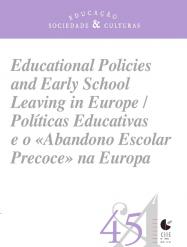Between school and work Vocational education and the policy against early school leaving in Poland
##plugins.themes.bootstrap3.article.main##
Resumo
The article analyses selected measures implemented by sectors of education and social policy in Poland, aimed at tackling the early school leaving (ESL) phenomenon. The data presented is
based on an analysis of policy documents, IDIs and FGDs with educational experts, representatives of
ministries, local authorities, school staff, regional employment centres and chambers of craft within the RESL.eu project. The starting point for the discussion is the hypothesis that there is a relation between leaving the system of education early, youth unemployment and NEETs rate. While the existence
of this relationship is equivocal, as shown by the analysis of existing data, the undertaken policy measures somewhat implicitly assume its presence. Early school leavers are seen as the potential
unemployed or at least as people who may have certain difficulties in entering the labour market. This is in contrast with the results of qualitative research, which show that the most common reason
for abandoning the school education, according to school principals and teachers, is taking up a job accompanied by the inability to reconcile work and study. Thus, further efforts to develop more flexible alternatives to school-based forms of vocational training and education should be reinforced.
##plugins.themes.bootstrap3.displayStats.downloads##
##plugins.themes.bootstrap3.article.details##
Secção

Este trabalho encontra-se publicado com a Licença Internacional Creative Commons Atribuição-NãoComercial-CompartilhaIgual 4.0.
Os/as autores/as mantêm os direitos autorais, sem restrições, e concedem à revista ESC o direito de primeira publicação, com o trabalho simultaneamente licenciado sob a Creative Commons Atribuição-NãoComercial-CompartilhaIgual 4.0 Internacional (CC BY-NC-SA). É permitido copiar, transformar e distribuir e adaptar o material em qualquer suporte ou formato, desde que com o devido reconhecimento da autoria e publicação inicial nesta revista, as alterações sejam identificadas e seja aplicada a mesma licença ao material derivado, não podendo ser usado para fins comerciais.

